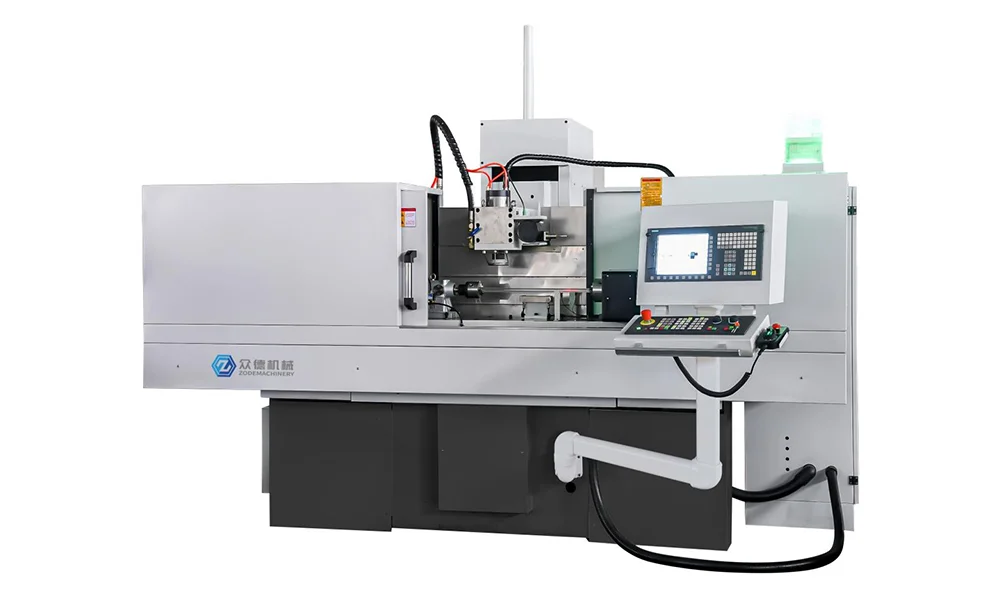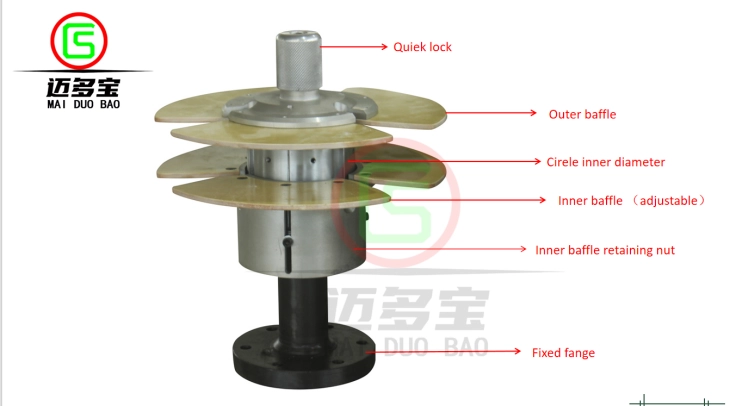In the evolving world of metalworking and manufacturing, precision and repeatability are two of the most sought-after qualities in any machining operation. Whether it's toolmaking, mold manufacturing, or mass production of components, ensuring tight tolerances and consistent surface finishes is critical. In this blog post, as a high performance automatic surface grinding machine factory, Nantong Zode will share the advantages of automatic 3 axis CNC surface grinder for metal cutting.
What is CNC Surface Grinder?
A surface grinder is a machine tool used to produce a smooth finish on flat surfaces. It uses a rotating abrasive wheel to remove material from the surface of a workpiece. In the case of a CNC surface grinder, the movement of the machine is controlled by a computer numerical control (CNC) system. The integration of CNC technology allows for high precision, repeatable operations, and the ability to execute complex grinding cycles without manual intervention.
A 3 axis CNC surface grinder refers to a machine that moves in three linear axes—X (left-right), Y (forward-backward), and Z (up-down). This configuration provides comprehensive control over the grinding head's position, enabling more complex surface profiles and tighter tolerances.
Core Components of Automatic 3 Axis CNC Surface Grinder
Understanding the anatomy of an automatic 3 axis CNC surface grinder helps appreciate its versatility and performance. The main components include:
- Grinding Wheel Head (Z-axis): The vertical movement enables precise depth control, allowing the machine to make fine adjustments in material removal.
- Work Table (X-axis): The horizontal movement left to right; this is where the workpiece is typically mounted.
- Saddle (Y-axis): This movement is front-to-back and facilitates cross-feed grinding operations.
- CNC Controller: The brain of the machine, which stores grinding programs, controls feed rates, coordinates axis movement, and ensures process automation.
- Hydraulic or Servo Systems: These power the motion of the components and provide the necessary force and stability for grinding.

Advantages of Automatic 3 Axis CNC Surface Grinder for Metal Cutting
1. Precision and Accuracy
CNC surface grinders offer superior accuracy in comparison to manual or semi-automatic models. The automated control system allows for consistent depth of cut, feed rate, and traverse speed, ensuring minimal deviation and perfect replication of parts.
2. Automation and Productivity
With full CNC control, the entire grinding cycle can be automated—from positioning to dressing of the wheel to execution of multi-pass grinding cycles. This reduces the need for operator intervention and significantly increases productivity, especially in batch processing.
3. Enhanced Surface Finish
Surface grinding is essential for achieving mirror-like finishes on metal parts. CNC control allows for gradual, fine passes with controlled feed rates and wheel dressing cycles that maintain the sharpness of the abrasive tool, leading to improved surface quality.
4. Repeatability
For industries like aerospace and automotive, where components often must conform to micrometer-level tolerances, repeatability is crucial. CNC surface grinders ensure that each part is ground identically, maintaining uniformity across production runs.
5. Versatility
While traditionally used for flat surfaces, modern 3 axis CNC surface grinders can perform a wide range of operations including slot grinding, profile grinding, and taper grinding. Some machines even incorporate automatic wheel changers and in-process measurement systems.
Applications of Automatic 3 Axis CNC Surface Grinder
The Automatic 3 axis CNC surface grinder for metal cutting finds application across various industries. Below are some typical uses:
- Tool and Die Making: Producing flat dies, molds, and precision tooling components with extremely tight tolerances.
- Automotive Industry: Grinding engine blocks, transmission components, and bearing surfaces.
- Medical Devices: Manufacturing implants and surgical tools where surface finish and dimensional accuracy are critical.
- General Manufacturing: Finishing operations for a wide range of metal parts, improving wear resistance and functionality.
Programming and Control Systems of Automatic 3 Axis CNC Surface Grinder
A standout feature of the 3 axis CNC surface grinder is its advanced control interface. Operators can program grinding cycles using G-code or through graphical user interfaces (GUIs) with conversational programming. Modern systems allow:
- Multi-pass Grinding: Where multiple roughing and finishing passes are executed with varied parameters.
- Automatic Wheel Dressing: Maintaining optimal wheel geometry and sharpness.
- Error Compensation: Using feedback from in-process gauging or laser sensors to adjust the grinding process in real-time.
Key Considerations When Choosing CNC Surface Grinder
When selecting a 3 axis CNC surface grinder for metal cutting, several factors must be considered:
- Workpiece Size and Weight: Ensure the table and spindle can handle the dimensions and mass of your typical workpieces.
- Spindle Power and Speed: Depending on the material (steel, titanium, aluminum, etc.), different power levels may be needed to achieve optimal grinding results.
- Machine Stiffness and Vibration Damping: A rigid machine base, often made from cast iron or polymer concrete, is essential for high-precision grinding.
- Cooling and Filtration Systems: Effective coolant delivery and swarf filtration prolong the life of the grinding wheel and improve finish quality.
Automatic 3 Axis CNC Surface Grinder Maintenance and Best Practices
Maintaining an automatic CNC surface grinder is essential for long-term reliability:
- Regular Calibration: Ensures axes are aligned and movement remains accurate.
- Wheel Dressing: Frequent dressing is required to maintain grinding wheel sharpness and surface geometry.
- Lubrication and Coolant Checks: Keep moving parts well-lubricated and monitor coolant levels and cleanliness.
- Software Updates: Keeping the control system up to date with the latest firmware and patches ensures security and performance improvements.
Conclusion
The Automatic 3 axis CNC surface grinder for metal cutting is a cornerstone of modern precision machining. With its ability to produce flat, smooth surfaces on a variety of metals with high accuracy and repeatability, it plays a critical role in multiple industries. Whether you're upgrading an existing machine shop or designing a new production line, incorporating CNC surface grinding into your workflow is a powerful step toward enhanced quality, efficiency, and competitiveness in today' s manufacturing landscape.
www.zodemc.com
Nantong Zode


